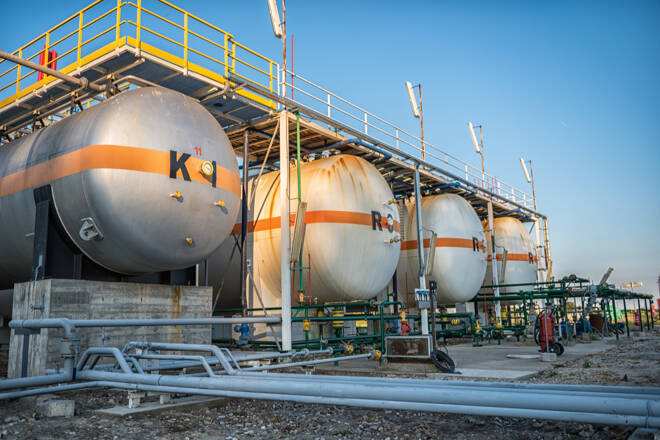Advertisement
Advertisement
Natural Gas Price Fundamental Daily Forecast – Projected Storage Deficit Providing Long-Term Support
By:
Data provider Refinitiv projected average gas output in the U.S. Lower 48 slightly lower than the prior week.
U.S. natural gas futures are edging higher early Tuesday after posting a surprising strong gain the previous session. The thinly traded market was bolstered by a positive technical picture and expectations of a slight dip in production this week.
The market is trading higher for a fourth straight session as buyers try to trigger a breakout from the current weeklong consolidation pattern. However, elevated overall output and lower consumption forecasts are weighing on trading volume and volatility.
At 03:40 GMT, October natural gas is trading $8.405, up $0.156 or +1.89%. On Monday, the United States Natural Gas Fund ETF (UNG) settled at $29.01, up $1.12 or +4.02%.
Refinitiv Supply Outlook
Data provider Refinitiv projected average gas output in the U.S. Lower 48 at 98.9 billion cubic feet per day (bcfd) for the current week, slightly lower than the 99.3 bcfd in the prior week. But this was well above the five-year average of 87 bcfd, according to Reuters.
Short-Term Traders Waiting for Catalyst, Long-Term Picture Still Bullish
The current price at $8.405 was traded on August 11 and on July 28, suggesting the price action has been limited or rangebound for nearly two-months.
It shouldn’t come as too much of a surprise, however, since the second-biggest U.S. LNG export plant at Freeport has been out of commission since June 8. Prior to that date, it was consuming about 2 billion cubic feet per day (bcfd) before the shutdown.
During a normal year, this event would have been extremely bearish, but this is not a normal year because of the war between Russia and Ukraine.
So far this year, gas futures are up about 112% as higher prices in Europe and Asia keep demand for U.S. LNG exports strong. Global gas prices have soared due to supply disruptions and sanctions linked to Russia’s Feb. 24 invasion of Ukraine. Gas is trading around $64 per mmBtu in Europe and $53 in Asia.
Prices didn’t retreat for very long after the Freeport shutdown because of high demand from Europe, which has helped create winter storage inadequacy issues in the United States. This is helping to generate the long-term support.
“The storage situation is definitely not going away – unless we start to get a lot bigger injections over the next few weeks,” StoneX Financial Inc.’s Thomas Saal, senior vice president of energy, told Natural Gas Intelligence (NGI).
For a look at all of today’s economic events, check out our economic calendar.
About the Author
James Hyerczykauthor
James Hyerczyk is a U.S. based seasoned technical analyst and educator with over 40 years of experience in market analysis and trading, specializing in chart patterns and price movement. He is the author of two books on technical analysis and has a background in both futures and stock markets.
Advertisement
